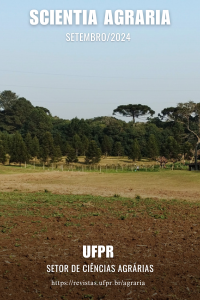UMBU TREE (Spondias tuberosa Arr. Cam. - Anacardiaceae): FROM EXTRACTIVE TO PLANTED CULTURE IN BRAZIL
DOI:
https://doi.org/10.5380/rsa.v20i2.96452Abstract
Umbu tree (Spondias tuberosa Arr. Cam.) is botanical species native to the Caatinga that plays significant cultural and economic role in Northeast Brazil. The aims of this study to evaluate the trend in umbu fruit production over a period of 21 years and to discuss the cultivation of the species, associated with its socioeconomic and environmental advantages in the semiarid region of Northeast Brazil. Data on extractive production and the monetary value of umbu fruit were obtained from the official platform of the Brazilian Institute of Geography and Statistics. Silvicultural aspects cultivation, management, and its market was obtained from specialized literature. Descriptive statistics on the data set and a trend analysis through regression model fitting was carried out using JMP® software. A downward trend in umbu tree fruit was estimated for most states, except for Alagoas, Paraíba, and Rio Grande do Norte. Alagoas was the only one with the best average variation (74.6%) in production and price (US$ 0.83) per kg of production via extractivism. The cultivating through plantations for commercial fruit umbu production is an alternative to overcome the declining trend in extractivism, ensuring continuation of family income and environmental protection of umbu tree populations in their natural habitats.
Published
How to Cite
Issue
Section
License
Direitos Autorais para artigos publicados nesta revista são do autor, com direitos de primeira publicação para a revista. Em virtude da aparecerem nesta revista de acesso público, os artigos são de uso gratuito, com atribuições próprias, em aplicações educacionais e não-comerciais.



